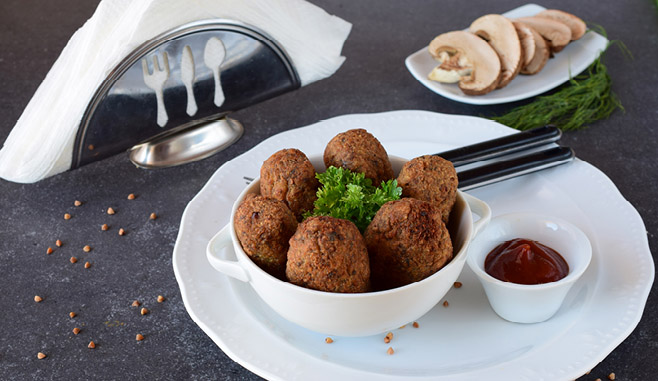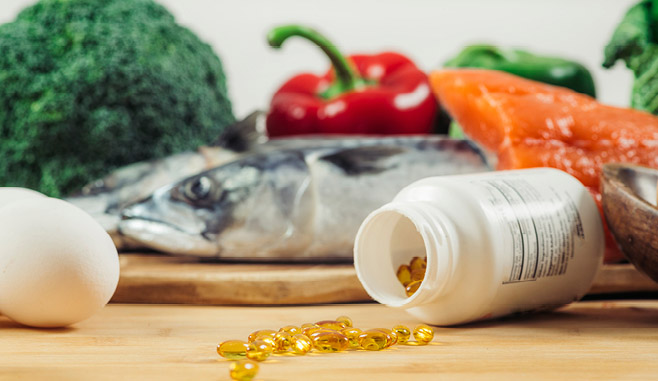

Dietitians Dish – June 8, 2020
Pick up a bag of potatoes and you’ll have tons of meal or side dish options!
If you’re watching your waistline, you can still include potatoes. They’re full of nutrients like potassium (which supports cardiovascular health) and vitamin C (which supports immunity). Potatoes can make a complete meal if you give some thought to how you top them off.

Versatility of potatoes doesn’t stop at how you top a baked potato. Thin slices baked until crisp on the outside can be used in place of tortilla chips or bread. Potato slices also offer a naturally gluten-free alternative to bread for flatbreads or bruschetta.
For a nutrient-packed side that needs 5 minutes to prep and is ready in under 15 minutes, this potato is a winner. Check out this and other recipes at: PotatoGoodness.com/potato-recipes.
Power Baked Potato

Ingredients:
- 1 Russet baking potato, about 10 oz.
- ½ cup part-skim ricotta
- ¾ cup baby spinach leaves, chopped if desired
- 1 ½ Tbsps. pesto
Directions:
- Wash the potato and pat dry. Prick with fork 4-5 times on both sides. Place on a microwave safe plate and microwave on HIGH for 5 minutes. Use oven mitts to flip the potato and microwave an additional 3 minutes.
Remove from microwave and set aside. - While the potato is cooking, mix together the ricotta and pesto in a bowl.
- When potato has cooled enough, split open the potato and stuff in the baby spinach leaves. Top with the ricotta-pesto mixture.

June 8, 2020
It’s Meatless Monday! Would you believe these meatballs are a meatless blend of mushrooms and buckwheat? With so many plant-based options that you can use in place of meat, planning a Meatless Monday meal is easier than ever before.
You can finely chop mushrooms, tofu, and beans as replacement for ground meats. Jackfruit can be used in place of shredded chicken or pork. Tofu and tempeh can be sliced to replace strips of meat.
There are also many brands of meat analogs or prepared meat alternatives available these days, including MorningStar Farms, Gardenburger, Beyond Meat, Before the Butcher, Gardein, Yves Veggie Cuisine, Lightlife, Quorn, Neat Meat, and others. The options and flavor profiles feel endless.
What is your preferred meat alternative or meatless recipe? Be sure to email and let me know. Just return to the Eat Right for Life homepage and fill out the Ask the Dietitian form. I’d love to feature some of your meatless ideas on a future Facebook post on the Eat Right for Life Facebook page! It’s also the way to ask me your questions, so be sure to email me.

June 5, 2020
Following through with routine medical care is still important, even in the wake of COVID-19. If you’re dealing with chronic health issues or just not feeling your best, it may be worth talking to your doctor about a blood test for Vitamin D deficiency. There are many conditions which seem negatively affected by low levels of Vitamin D. Check out the Spotlight on Nutrition page for more information about health concerns which could be related to these levels.
To build up your levels, you can take the following actions: – Spend short periods of time in the sun (without sunscreen as it blocks absorption of UV rays needed to make Vitamin D in the skin)
– Eat foods that are a natural source of Vitamin D *Fatty fish like salmon, tuna and sardines *Egg yolks *Cheese *Beef liver
– Eat foods which are fortified with Vitamin D *Dairy products *Orange juice *Soy milk *Cereals
– Follow a doctor’s orders for taking Vitamin D supplements (prescribed or over-the-counter) Vitamin D is fat-soluble, so it needs fat to be absorbed by the body. This is a vitamin which the body stores, so toxic levels can be of concern. That is why it’s so important to work with your doctor to determine if your levels are too low and how to improve them safely. But, having adequate Vitamin D levels may be beneficial for a variety of physical and mental health issues.

June 3, 2020
I’m back with more Wellness Wednesday tips. If you have immediate family members with diabetes and are concerned you might develop it, then this information is for you! Preventing prediabetes is as simple as adopting a healthier lifestyle.
About 84 million adults in the U.S., more than 1 out of 3, have prediabetes. Ninety percent of people with prediabetes don’t know they have it. If left untreated, prediabetes can lead to type 2 diabetes. Put simply: it’s smart to take precautionary steps to avoid prediabetes and type 2 diabetes.
Being diagnosed with prediabetes means your blood glucose levels are above normal, but not quite high enough to be considered diabetic. There are several risk factors associated with prediabetes and type 2 diabetes, which include: being overweight, living a sedentary lifestyle, having a family history of diabetes or heart disease, battling high blood pressure or cholesterol and being older than 45.
There are several simple changes you can adopt to prevent prediabetes:
LOSE WEIGHT: Even a loss of 5–7% of body weight can make a drastic impact on your risk of developing prediabetes and type 2 diabetes.
EXERCISE: Participate in regular physical activity to lower risks for prediabetes.
EAT HEALTHY: Cut out sodium-heavy restaurant and processed foods, and replace with fresh produce and lean proteins.
QUIT SMOKING: People who smoke have a 30 – 40 percent higher risk of diabetes than non-smokers. Smoking is known to increase inflammation and oxidative stress in the body, both of which damages cells and interferes with proper cell function (which can contribute to developing diabetes).
Being consistent with lifestyle changes is a gift to your health. Make proactive choices that will help you stay motivated and be sure to actively solve any problems that interfere with your goals.

June 1, 2020
Mindful Monday should become a thing… especially as we are staying home more. Actually, being more mindful of our actions and choices is a good habit to develop for every day! Being at home may have you struggling to get enough physical activity. Parents who are working may be concerned about the screen time their children have available. And, when the kitchen is just steps away, it’s hard to consider it “CLOSED!” between meals.
Whether you’re trying to be mindful of what you’re putting in your mouth, how active you are, or to deal with anxiety of current events, mindfulness practices are the same. Check out these ideas for mindfulness. They’re geared to kids and teens, but really a solid start for anyone who is trying to develop more mindful skills. https://kidshealth.org



